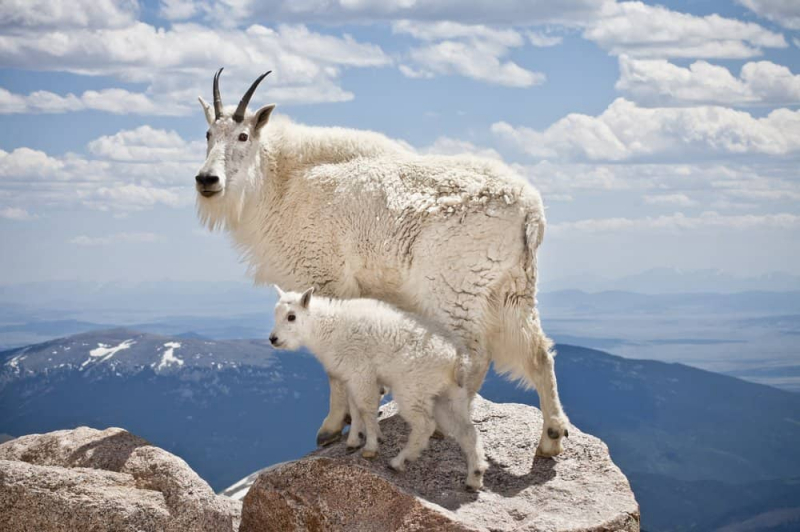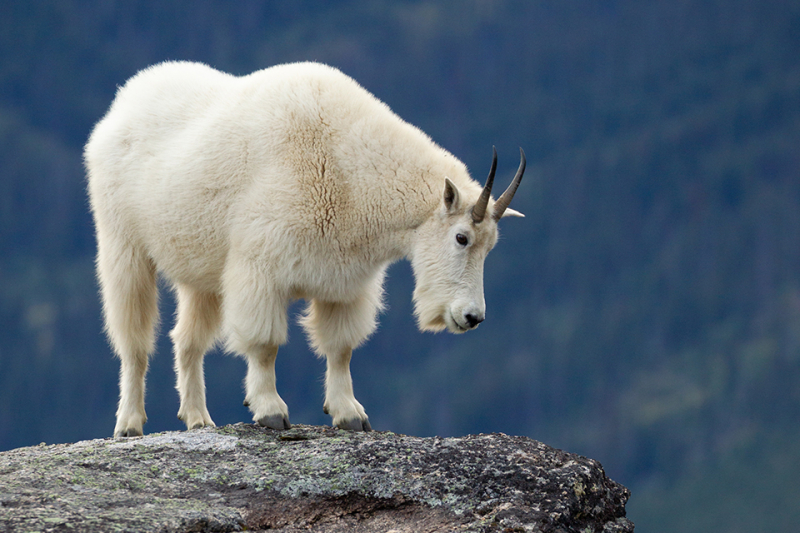Mountain Goat

Mountain goats are truly one of the best resilient animals in the world, surviving at heights above 13,000 feet. Alpine locations, such as the Rocky Mountains, the Cascade Mountains, and Alaska's Chugach Mountains, are commonly home to them.
With inner pads that give grip and cloven hooves that may stretch out, the mountain goat's feet are well-suited for climbing steep, rocky slopes with pitches reaching 60°. Sharp dewclaws on the tips of their feet prevent them from sliding. They have strong shoulder and neck muscles that assist them in climbing steep terrain. Researchers were able to measure a mountain goat's full-body movement as it ascended a 45-degree slope based on a field recording in the Rocky Mountains of Canada. During the first phase of the goat's propulsion, researchers saw that the rear legs were stretched and the front legs were tucked near to the goat's torso. The goat elevated its rear legs near its chest during the second phase, but the humerus of its front leg remained locked in a fixed position relative to the goat's chest, allowing the elbow to be detained near the complete body's center of balance. The vertical translation of the center of mass up the mountain slope was achieved by extending the elbow and carpal joints. To get from one rock to the next, a mountain goat can jump 12 feet!
Mountain goats are distinguished by their unusual beards and long, thick coats, which protect them from the cold and bitter mountain winds. On the icy peaks, their bright white coats provide excellent concealment. This coat is shed by goats during the more temperate summer months. Mountain goats are classified as the least concern on the IUCN Red List of Threatened Species, even though they are considered to be shrinking in size as a result of global warming.
Scientific Name: Oreamnos americanus
Resilient Animal for Surviving Extreme Altitude: Lives at Altitudes of 13,000+ Feet











